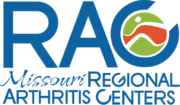Non-Invasive Treatments for Osteoarthritis Pain
Osteoarthritis is diagnosed when cartilage at the ends of bones has become worn down by wear and tear and/or the aging process. Healthy cartilage acts as a shock absorber for joints, as bones move against one another or are affected by daily activities. Knees and hips are especially vulnerable to osteoarthritis. Once diagnosed, patients should make extra accommodations to prevent further knee or hip injury from occurring.
By taking preventative measures, and maximizing the benefits of non-invasive treatments such as diet, exercise, and lifestyle modifications, patients can often avoid surgical treatments later on.
Diet
Diet is crucial to maintaining bone and joint health. The body is constantly replenishing depleted and damaged tissues with vitamins and nutrients via the blood supply. A deficient diet does not provide adequate nutrition, in which case bones and joints will suffer. Osteoarthritis patients should focus on eating a well-balanced diet, full of vitamin- and mineral-rich fruits and vegetables. It is a good idea to discuss bone- and joint-specific supplements with a doctor. Many supplements, such as calcium, vitamin D and magnesium, help bones to build and maintain density. Others, such as chondroitin sulfate and glucosamine, have been shown to improve joint health and alleviate pain.
Exercise
Patients with OA often avoid exercise due to painful joints and/or a fear of a severe joint injury. Unfortunately, a lack of exercise is often responsible for falls, breaks and pain. Exercise can actually alleviate joint pain. Bones require weight-bearing exercises to continue building density. Even low-impact weight-bearing activities such as weight lifting, yoga or Pilates are beneficial. Walking, water aerobics, and dance classes are examples of exercises that can help to improve balance and range of motion.
Balance is critical in avoiding falls, which are the leading cause of hip injuries. Flexibility is also important, so OA patients should always stretch before exercising and/or include exercises that emphasize stretching such as yoga, Tai Chi or certain dance styles.
Modifications
Simple modifications can slow down OA damage and/or prevent falls, including:
- Custom-made orthotic inserts can be used to help cushion knees, hips and the lower back from the impact of walking or jogging. This can help to slow the damage to joints and can also help to reduce joint pain.
- Handrails should be installed, and used, in high-risk fall areas such as stairways, bathrooms and showers.
Focusing on bone and joint health is critical to managing the pain of OA and preventing further injury.
Medical Device Recalls
Some patients have not been as fortunate and were not able to avoid surgery. Recent medical device recalls should have these osteoarthritis patients on high alert. For example, Stryker Corporation, a major joint replacement manufacturer, has recently recalled its Stryker Rejuvenate. The Rejuvenate is one of Stryker's "latest and greatest" innovations designed for hip replacement surgery.
Unfortunately, the device has been linked to high numbers of health complications. This is just one of several recalls. Rather than healing a patient's hip injury, hip replacement surgery can mean further tissue damage, metal toxicity and/or revision surgeries. Osteoarthritis patients can reduce osteoarthritis-related hip pain, and the chances of hip injury resulting in surgical interventions, by using non-invasive treatments.
Elizabeth Carrollton writes about defective medical devices and dangerous drugs for Drugwatch.com.
